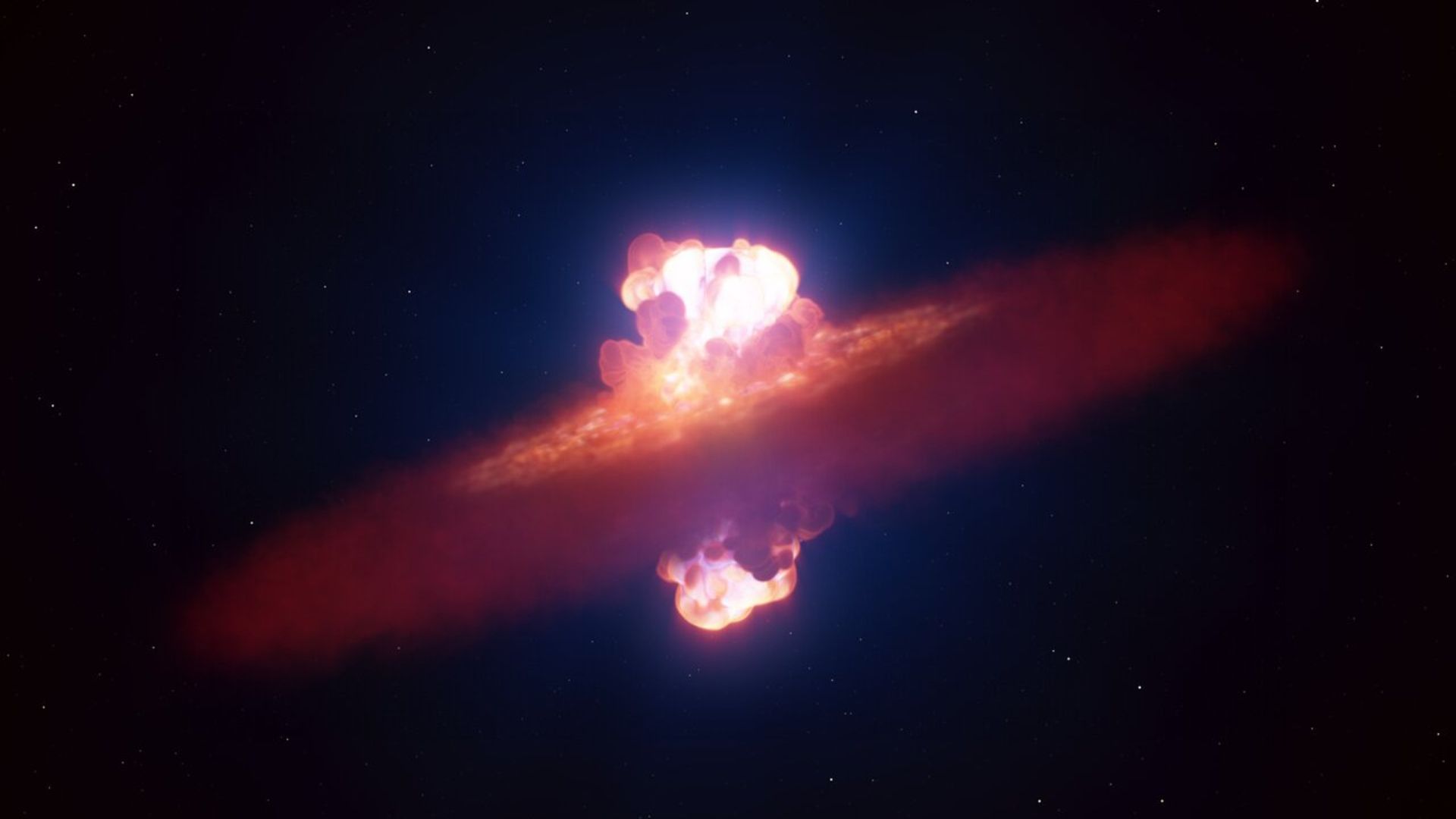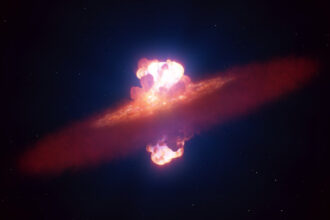Scientists have captured the moment the shockwave of a supernova explosion breaks out through the surface of a doomed star for the first time, revealing what appears to be a surprisingly symmetrical detonation.
Seeing this moment in detail has previously been elusive because it’s rare for a supernova to be spotted early enough and for telescopes to be trained on it — and when they have been, the exploding star has been too far away.
He and his international team of colleagues, from China, Europe, the Middle East and the U.S. quickly asked for time on the Very Large Telescope (VLT) at the European Southern Observatory (ESO) in Chile to view the supernova. Twenty-six hours after the supernova was discovered by the cameras of the global Asteroid Terrestrial-impact Last Alert System (ATLAS), the VLT was providing data.
“The first VLT observations captured the phase during which matter accelerated by the explosion near the center of the star shot through the star’s surface,” said one of those colleagues, ESO’s Dietrich Baade, in a statement. “For a few hours, the geometry of the star and its explosion could be, and were, observed together.”
The star that went supernova was a massive, red supergiant that was between 12 and 15 times the mass of our sun. Such stars die when they can no longer produce nuclear fusion reactions in their core, prompting the core to gravitationally collapse to form a neutron star. The layers of the star around the core fall on it and then rebound outwards, driving an explosion that blows the star apart. The star, being ripped apart from the inside-out, began to dramatically brighten, but because a red supergiant is so huge, with a radius of 250 million kilometers (217 million miles) or 500 times the radius of the Sun, it took about a day for this shockwave to breakout through its visible surface.
This was the moment that Yang, Baade and their colleagues were waiting for. Had they gotten to it a day later, they would have missed it. Seeing the moment of the shock break out is vital in understanding how exactly a star blows itself apart.
Although the supernova itself couldn’t be resolved as anything put a point of light, the polarization of that light held the clues as to the geometry of the breakout.
“The geometry of a supernova explosion provides fundamental information on stellar evolution and the physical processes leading to these cosmic fireworks,” said Yang.

Using the VLT’s FORS2 spectrograph, the team used an observing technique called spectropolarimetry to measure that polarization.
“Spectropolarimetry delivers information about the geometry of the explosion that other types of observation cannot provide because the angular scales are too tiny,” said another team-member, Lifan Wang of Texas A&M University.
The measurement showed that the shape of the breakout explosion was flattened, like an olive or grape. Crucially, though, the explosion propagated symmetrically, and continued to do so even when it collided with a ring of circumstellar material.
“These findings suggest a common physical mechanism that drives the explosion of many massive stars, which manifests a well-defined axial symmetry and acts on large scales,” said Yang.
The findings will allow astronomers to rule out some models and strengthen others that describe what drives the shockwave in a supernova explosion.
In particular, some models suggest that the shockwave can gain energy by absorbing peculiar particles called neutrinos as it rides its way out from the core to the surface of the star. Neutrino absorption, however, should lead to highly asymmetrical explosions, which does not seem to be the case here. On occasions where supernova explosions have, at a later stage, been seen to be asymmetric, Yang’s team proposes that it could be powerful magnetic fields shaping the asymmetry rather than neutrinos.
The findings from SN 2024ggi were published on Nov. 12 in Science Advances, and the paper is available on the ESO website.







